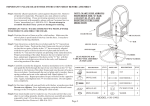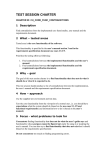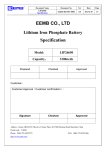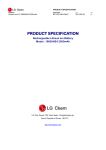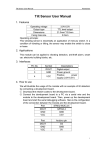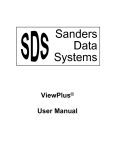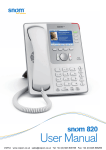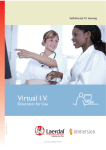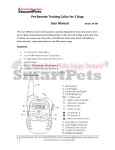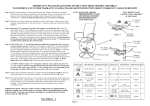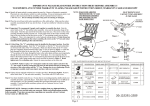Download Solidtata testing 2
Transcript
TEST SESSION CHARTER (GENERAL) CHARTER ID: CH_GEN_1.0 Analyse the suitability of the system to intended use, by exploring the core functionality of the system. Use the User’s Guide, requirements, use cases or any other available documentation and discuss with the developers to find out the core functionality of the system and the high level requirements for the system. Test the core functionality on a level of some typical valid inputs and conditions. Select one area of the core functionality for more detailed testing and exercise this selected area more thoroughly. Your goal is to analyse the system’s suitability to intended use. This means that you should aim in forming a general assessment on the quality of the core functionality and assess the robustness of the system by selecting one functionality or area for more detailed testing. Use manual testing and try to form some equivalence classes and find some input and output boundaries while exploring the system. In general assessment of the core functionality try to cover as many valid equivalence classes as possible. In more detailed testing focus on exercising boundaries and use error-guessing to find defects and try to force some error handling situations to occur and exercise the error handling properties of the system. You may use any available tools and test data that the other group can provide for their system. ! You should exercise the system from the user’s perspective and report any defects or issues that, based on your judgement, hiders the user of the system and decreases the suitability of the system to intended use. You may consider any specific risks of this system that the other group or you can identify. " #$ %#%%&'( %)*+), )#%)#+.0 6.1 -. // / / ( 1 + TASK BREAKDOWN 2+*)&'( , -. )#%) #%&3( *( 6/7 #4#52)&'( , 823 &(9#%)&3*)&'( *( /7 %#%%&'( %#)2: , /7 -. +#:'+)&(3 , -. -. 5 *+)#+ 9%;'::'+)2(&)< , /7 = //7 6.2 . = -. DATA FILES (=* 6.3 TEST NOTES The test was conducted as an introduction to the product before going through the test charter given to us by MTS. The base material for this testing was the user manual. 6.4 BUGS 6.4.1 Roller Small screen There’s a “hidden” menu item, which takes you to a white screen with only ‘roller_small.png ‘ displayed at the bottom. It is not clear how to replicate the bug, but turning the wheel with an upwards pointing motion or a motion directly on the bottom line seems to be the best way. The debug information: ) +#* & >#? . @ 6 . A / . $. 1 / . @61 / ;/ After this the software prints keyboard presses in the console, but doesn’t respond in any way. 6.4.2 Menu items not functional After trying Camera for a couple of times and then selecting Contacts, the menu didn’t work. The buttons turned blue and the device vibrated when the buttons were released, but the software didn’t go to another menu, it was stuck in the main menu. A restart solved the situation. This could not be easily replicated. 6.4.3 Phone number entering doesn’t work Phone number screen key presses go to wrong numbers. So if you press 5 the phone displays 8, and so-on. 3, 6 and 9 are not working. 6.5 ISSUES Switching between the menu and the calling screen is unintuitive. It works by pressing the time or the dialling, but we think that the X gesture should also exit the phone number screen. Haptic message part doesn’t correspond to the user’s manual, the user manual should be updated.. User manual says “T- 76.115 User requirements” in the header. It would be nice to get response from the buttons when pressing them, not only when releasing them. Also it would be nice to have the buttons grow when they’re pressed and shrink when they’re released.



